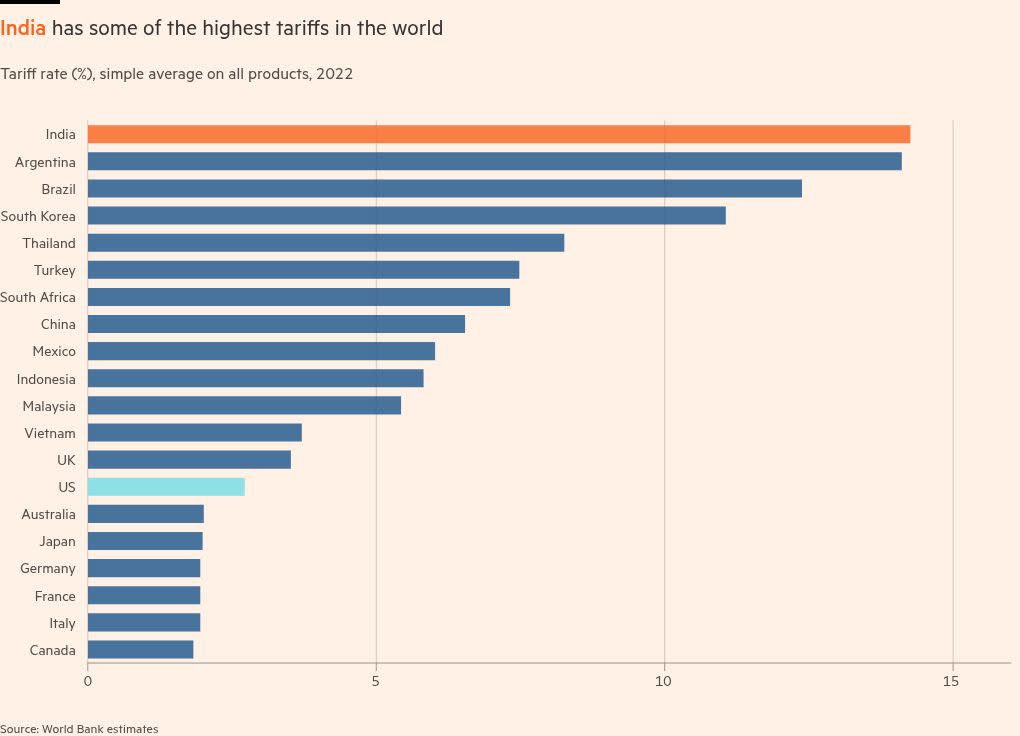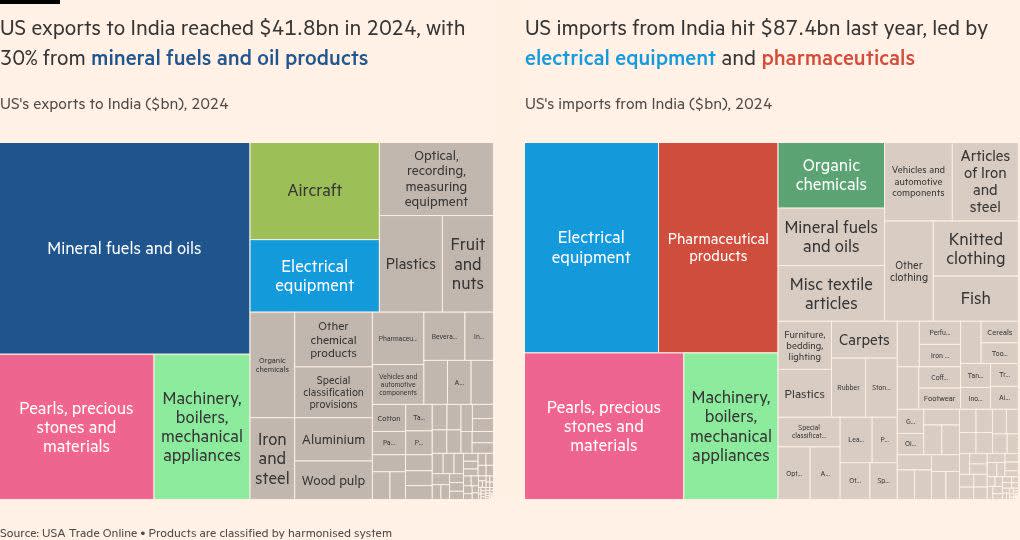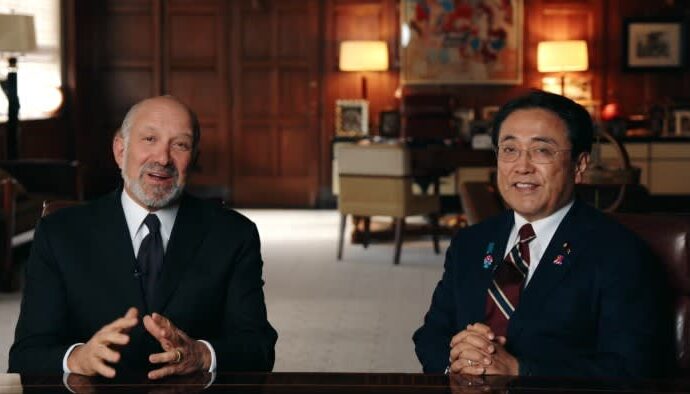Unlock the White House Watch newsletter for free
Your guide to what Trump’s second term means for Washington, business and the world
Donald Trump announced the US would levy 25 per cent tariffs on imports from India and impose an unspecified penalty on the south Asian nation, but later threw his plans into doubt by saying the two sides were still negotiating.
In a post on his Truth Social platform on Wednesday, the US president said Indian tariffs were “among the highest in the World” and that New Delhi had “the most strenuous and obnoxious non-monetary Trade Barriers of any Country”.
India had “always bought a vast majority of their military equipment from Russia” and was Moscow’s biggest purchaser of energy at a time when the Ukraine war was still raging, Trump said.
“ALL THINGS NOT GOOD!” he wrote. “INDIA WILL THEREFORE BE PAYING A TARIFF OF 25%, PLUS A PENALTY FOR THE ABOVE, STARTING ON AUGUST FIRST.”
But Trump later on Wednesday told reporters that Washington was currently negotiating with New Delhi, adding: “We’ll see what happens.”
The US president had said on Tuesday he would be imposing sanctions on Russia, including “secondary tariffs” on its energy customers, if Moscow did not halt the war in Ukraine, within 10 or 12 days.
Trump has also been pushing countries to boost purchases of US energy and military equipment. The EU said it would buy more American weapons as part of a trade deal with the US struck over the weekend.
In a separate post on Wednesday, Trump added: “WE HAVE A MASSIVE TRADE DEFICIT WITH INDIA!!!” The US had a $45.7bn goods trade deficit with India in 2024.
The Indian government said it had “taken note” of Trump’s statement and was “studying its implications”.
It added that it remained committed to “concluding a fair, balanced and mutually beneficial bilateral trade agreement”, but attached “the utmost importance” to protecting and promoting the welfare of farmers, entrepreneurs and small and medium-sized businesses.
“The government will take all steps necessary to secure our national interest,” it said.
Speaking before Trump’s remarks to reporters, an Indian official who declined to be identified said the president’s social media post did not appear to be his final word.
“So far it’s a tweet and not a letter. That seems to indicate that there is some scope,” the official said. “For others he has just been sending out letters to a president or a PM that basically says ‘screw you’.”
Trump’s comments followed three turbulent weeks in which he has alternated between issuing letters threatening high tariffs on other countries and announcing deals.
The tariffs on New Delhi will probably impact Apple’s plan to source more than 60mn iPhones sold each year in the US from India by the end of 2025.
With shipments from China declining, India accounted for 44 per cent of smartphones imported to the US in the second quarter of this year, up from 13 per cent in the same period in 2024, according to research group Canalys.
Dhiraj Nim, a Mumbai-based economist at ANZ, said the 25 per cent tariffs almost took India back to the 26 per cent levy Trump announced for the country on his so-called liberation day on April 2, adding: “Some of India’s Asian peers have clinched a deal with a more favourable tariff rate.”
India has been one of dozens of countries forced into bruising negotiations with the Trump administration since that time.
“Although trade talks between the two nations appear to have stalled . . . we believe the trade saga is far from over,” said Madhavi Arora, chief economist at Emkay Global in Mumbai.
During weeks of intense talks between US and Indian trade negotiators, a deal sometimes appeared imminent, with Trump telling reporters this month it was “very close” to being completed.
The south Asian nation, which has been a major buyer of discounted Russian crude, has more than doubled its oil imports from the US this year, while cutting shipments from Russia, Saudi Arabia and Iraq, in a bid to appease Trump.
New Delhi had also offered Washington “deep” import tariff cuts on a range of American goods, but sought to retain steep tariffs on many agricultural imports, which include 70-80 per cent duties on US rice, people with knowledge of the negotiations had previously told the Financial Times.
The country had also pushed the US to lower tariffs on Indian exports of labour-intensive industries including jewellery, textiles, footwear, leather and handicrafts, the FT has previously reported.
India’s commerce minister Piyush Goyal said on Saturday that talks with the US were at an “advanced stage” and expressed confidence that a deal would be reached. But he added that New Delhi would “not work under pressure” and that US negotiators would arrive in India in the second half of August.




